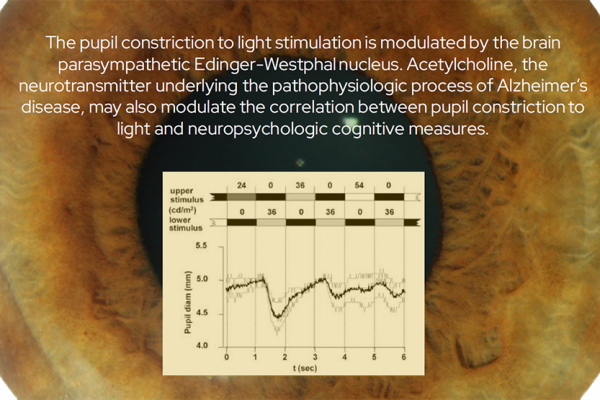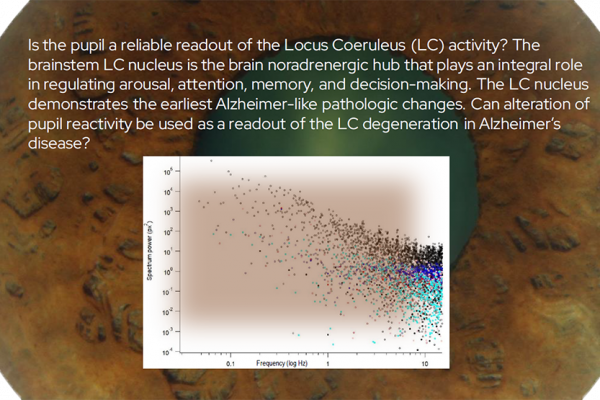The Chen Lab explores how pupil reactivity can serve as a noninvasive biomarker for brain aging and neurodegenerative disease. By studying the neural pathways that regulate the pupil—such as the Edinger-Westphal nucleus and Locus Coeruleus—we investigate links between pupil responses, cognitive decline, and early Alzheimer’s pathology. Our goal is to better understand how subtle changes in the eye reflect broader changes in brain health.
Areas of Research
Edinger-Westphal Nucleus and Pupil Constriction
Pupil response to light is shaped by brain activity in the Edinger-Westphal nucleus. This response may reflect early Alzheimer’s changes tied to acetylcholine and cognitive function.

ipRGCs and Cognitive Function
Specialized retinal cells (ipRGCs) link light perception to brain centers that regulate circadian rhythms and cognition. Their role in pupil response may reveal early signs of cognitive decline.

Locus Coeruleus and Alzheimer’s Detection
The Locus Coeruleus is an early site of Alzheimer’s pathology. Changes in pupil reactivity may offer a noninvasive window into its function and degeneration.
